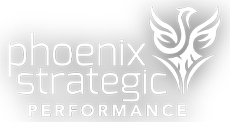Over the past ten years, women’s representation in the workforce has increased at every level in corporate America. However, recent data from Lean In and McKinsey & Company's “Women in the Workplace” report shows that while there is good news, there are no signs of equity across the pipeline. Here are some of the key takeaways from the report.
Current State
- Senior positions are filled with women who are hired from the outside.
Disappointingly, many top-level company positions were filled by women brought in from outside the company instead of promoting women from within. According to the 2023 data, 40% of C-Suite leaders in their roles last year were outside hires. Alexis Krivkovich, Senior Partner at McKinsey & Company, states that this “weakness in the internal promotion pipeline is largely to blame for women’s underrepresentation in senior roles.” The lack of women in the pipeline has been a corporate excuse for over 50 years. It’s time to start making real, positive, long-term commitments to women in the workforce to have opportunities to advance.
While we have seen meaningful, though modest, gains in women’s corporate representation; however, progress has been much slower earlier in the pipeline at the entry and manager levels.
- Women remain underrepresented at every stage of the corporate pipeline, regardless of race and ethnicity.
- The ‘broken rung’ remains a significant barrier to women’s advancement, especially for women of color.
- It will take nearly 50 years to achieve gender parity for all women.
Company Actions: There is still critical work to do
- Company commitments to diversity and programs geared toward women are both declining, for example:
- Priorities of the organization
- Manager training and instruction
- Flexible work
- Hiring and promotion fairness
- Career Advancement programs tailored to women
- The employee experience: Women’s experiences at work have not improved
- Despite efforts, competence-based microaggressions have persisted from 2018 to 2024.
Recommendations for Companies: The next phase of work will require a more extensive playbook
- Companies making the most considerable strides in advancing women are applying more practices that make the workplace more equitable.
- Commitment and engagement
- Visibility into key advancement metrics
- Investment in women’s career development
- Manager training and accountability
- Efforts to ensure hiring and performance reviews are fair
- Training to foster equity and inclusion
- Employee benefits
- Flexibility
- Women are still facing early career headwinds
- Companies must remain focused on DEI and advancement opportunities
- Evaluate the quality of your employee training
- Reward managers for progress on more than just business goals
While there have been some advancements in women’s representation within corporate America over the past decade, significant barriers to equity persist. The challenges highlighted in the pipeline, particularly the lack of internal promotion and the ongoing ‘broken rung,’ emphasize the need for companies to prioritize sustained, meaningful efforts to advance women in the workplace. Organizations must invest in more robust diversity initiatives to drive real change, provide career development opportunities, and foster a culture of equity and inclusion. The next phase of progress will require companies to hold themselves accountable and remain committed to creating an environment where women, especially women of color, can thrive and advance at every level.
We invite you to subscribe to our blog to receive the latest leadership and management tips and advice.





